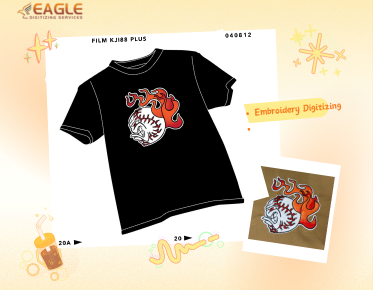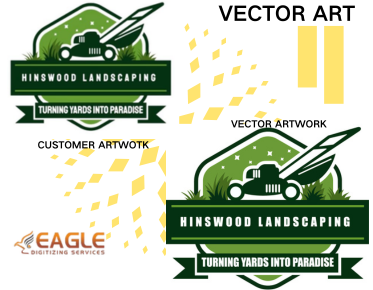Mastering the Art of Screen Printing: A Complete Guide
Screen printing is a popular and versatile method of printing designs onto a variety of materials, offering vibrant colors and a tactile finish. Whether you're printing on textiles, ceramics, or glass, the basic steps in screen printing remain consistent. This blog will guide you through the essential steps to master the art of screen printing.
Step 1: Creating the Design
The initial step in screen printing involves creating a design. Whether it's hand-drawn or computer-generated, the design needs to be finalized and prepared for printing. Many professionals use vector art services to convert designs into a format suitable for printing, ensuring sharpness and scalability. Companies like Eagle Digitizing provide exceptional vector art conversion services, which is essential for clean and precise screen printing.
Using Vector Art for Screen Printing
Vector files are preferred for screen printing due to their scalability without loss of quality. Converting your artwork into vector format can enhance the output on the printed material. For example, vector art conversion services make this process seamless and effective.
Step 2: Preparing the Screen
Once the design is ready, the next step is to prepare the screen. The screen is a piece of mesh stretched tightly over a frame. A photosensitive emulsion is coated onto the screen which will hold the design after it is exposed to light.
Emulsion and Exposure
The coated screen is then dried in a dark environment to prevent premature exposure. Once dried, the screen is placed in an exposure unit with the design on a transparency laid on top. When exposed to bright light for a set amount of time, the emulsion hardens except where the design blocks the light. This process creates a stencil ready for printing.
Step 3: Setting Up the Press
The press setup is crucial for consistent printing results. Whether using a manual or an automatic press, ensure that the screen is securely mounted. The accurate registration of the screen ensures that each color layer aligns correctly, especially when printing multi-color designs.
Ink Application
Before printing, ink is poured onto the screen. A squeegee is used to push the ink through the screen's stencil onto the substrate. Various types of inks can be used depending on the material being printed on. It's important to select the appropriate ink to achieve the desired finish and durability.
Step 4: Printing
With everything in place, it's time to start printing. By pulling the squeegee across the screen, the ink passes through the open areas of the stencil and onto the material below. Each item must be carefully placed under the screen for uniform results.
Precision and Consistency
Ensuring that every application of the squeegee is done consistently will produce sharper and more defined prints. Techniques such as printing in layers and allowing drying time between colors are crucial in multi-color printing. Utilizing services like vectorizing services can help maintain design integrity throughout this process.
Step 5: Curing and Finishing
The final step in screen printing involves curing the ink. Proper curing ensures that the design adheres permanently to the fabric or substrate, preventing fading and washing out. This is typically done in a conveyor dryer, where heat is applied to set the ink.
The Importance of Curing
Effective curing not only affects the durability of the print but also its tactile quality. A correctly cured print should feel as integrated with the material as possible.
Increasing Efficiency with Professionals
While screen printing can be done in a small shop or personal studio, working with professionals can increase efficiency and reduce errors. Industry experts like Eagle Digitizing offer additional services such as image to vector conversion services, allowing seamless preparation for screen printing. Their service extends excellence through precision and attention to detail, making them a preferred choice for many businesses seeking high-quality prints.
As the screen printing field continues to evolve, innovations in printing technologies and high-resolution designs are opening up new possibilities. Engaging with these modern developments can lead to stunning visual products and exciting creative opportunities. For anyone invested in screen printing, keeping abreast of trends and continuously improving technique guarantees a position at the forefront of this timeless art.
.png)


